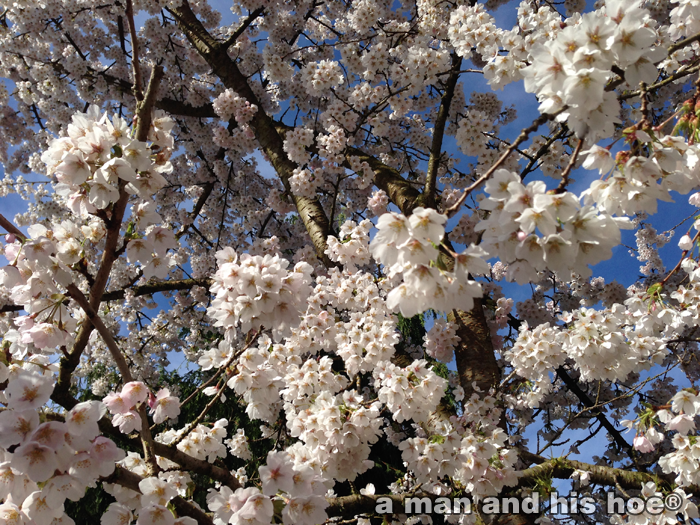
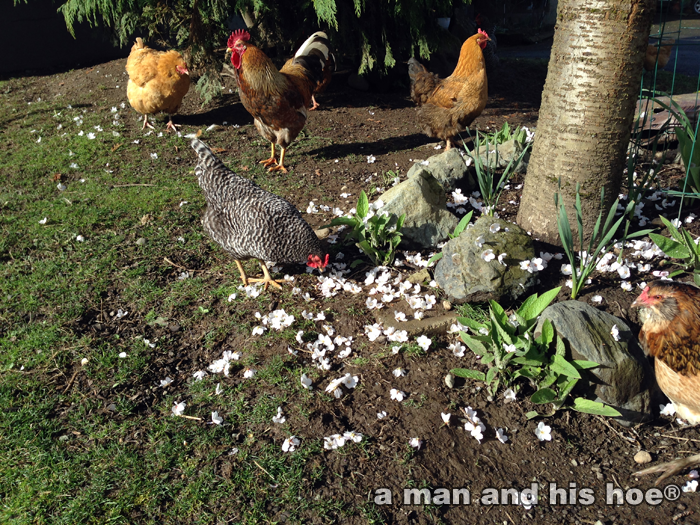
What does a cherry tree full of blossoms look like to a chicken? Manna from heaven? The taste of things to come? Each spring, the chickens enjoy a feast of cherry blossoms. Did the chicken you buy get a chance to taste cherry blossoms? Do the hens which lay the eggs you buy, get to pick fresh fallen cherry blossoms?
[wpvideo dv8XQcha]
Author: theMan
-
Cherry Blossoms are for Eating
-
All It Takes Is a Little Sunshine
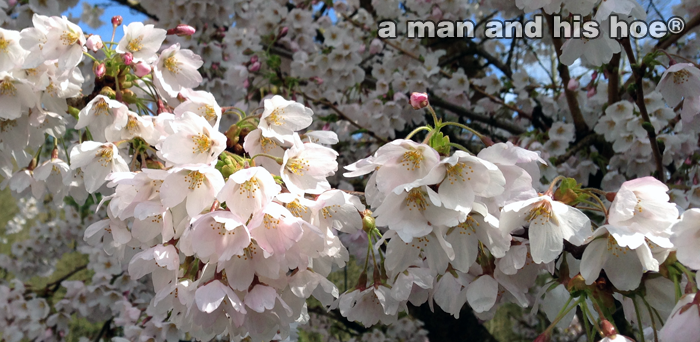
All it takes is a little sunshine to make the cherry blossoms explode. What a pleasant surprise after many days of clouds and rain.
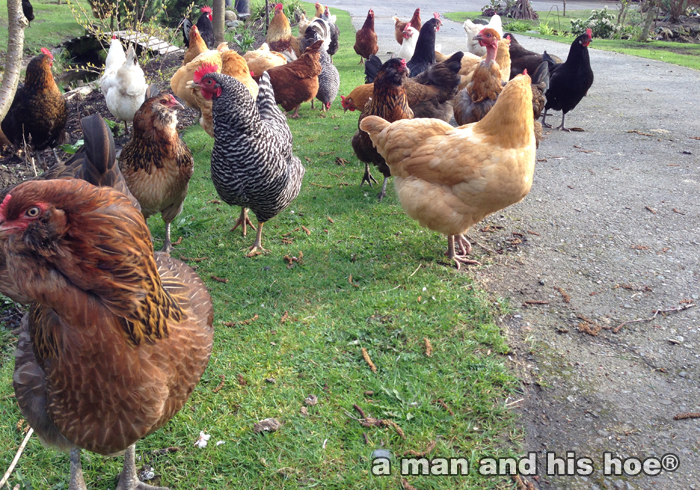
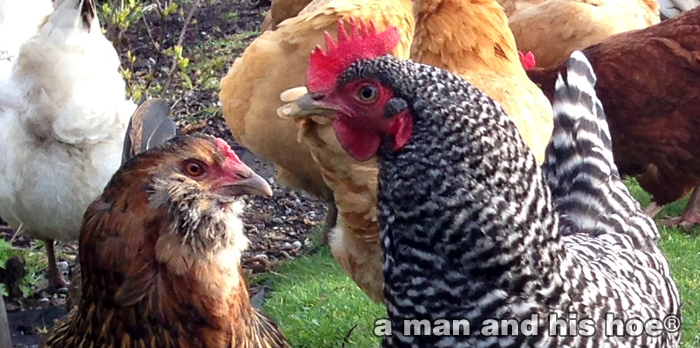
All it takes is a little sunshine to bring out all the chickens. And what are they up to? Are they just out enjoying the late afternoon sun? Are they looking for some treats? Out showing off their Sunday best?
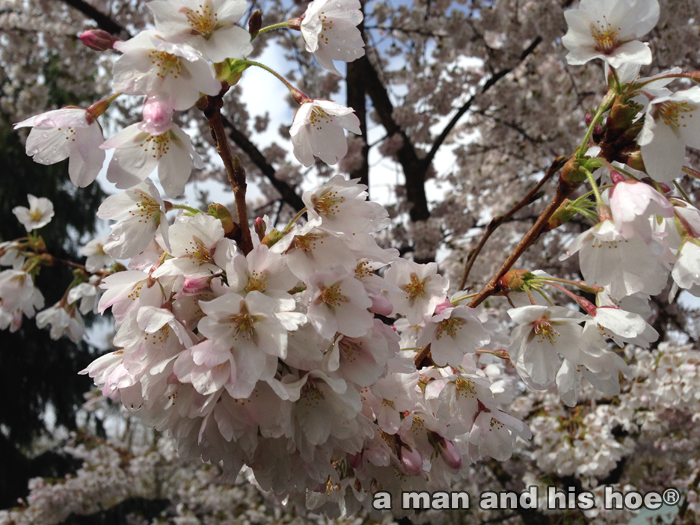
-
Why Chicks Deserve a Mother – Reason #2
[wpvideo 2kDUb7PB]
Another reason chicks deserve a mother is that with a mother, they get to go outside at a very early age. These chicks are just four days old and they are having the time of their lives scratching around outdoors with their mother. From now on, they will be spending most of their days outdoors. Farmers who raise their chicks without mothers would never consider putting such young chicks out to pasture. Most wait until the chicks are three, four or five weeks old before putting them outside. For example:- Green Legacy Farms waits until their chicks are four weeks old.
- Jericho Settlers Farm keeps them indoors for three weeks.
- Stony Brook Farm puts them out to pasture after two, three or four weeks depending on the time of year.
- Earth Action Mentor waits three weeks, though if the weather isn’t too cold, they will put them out earlier.
What these farms are doing is understandable. Without a mother to guard and provide warmth as needed, putting chicks outside after just four days would be cruel, if not a death sentence. But with a mother watching over the chicks, going outdoors at just four days old, even in cool weather, is no problem. The earliest I’ve seen a hen take her chicks outdoors is at day two, and the latest at 14 days. Most of the hens have their chicks running around outdoors within a week of hatching.
-
Why Chicks Deserve a Mother – Reason #1
[wpvideo 3y9aTj4J]
Imelda is curious about the new chicks. The last few days, she’s spent a fair amount of time hanging out with the new mom and her chicks. Is she wanting to hatch eggs of her own? Does she think the chicks look good to eat? I don’t think so because she’s never shown any aggression toward the chicks. She just seems to enjoy hanging out with them.
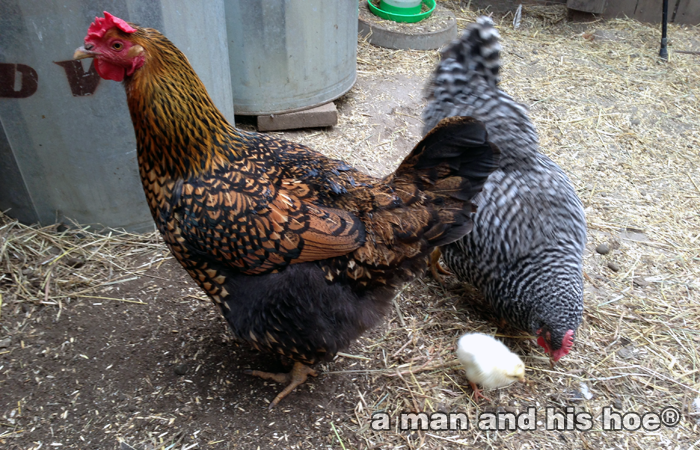
Another Dominique hen has gone broody. Today I prepped an incubation suite for her. She’s been sitting on two wooden eggs for the last two days. Tonight, when it is dark, I’ll move her into the incubation suite and put 10 to 12 eggs under her. Hopefully, in three weeks, I’ll have another clutch of chicks. Moving broody hens is risky. Some will take to the new nest without a hitch. Others will want to go back to the nest where they were brooding.
This is the first time I’ve made an incubation suite. It will give the brooding hen, a safe, quiet place to sit for three weeks without being disturbed by the other hens. Besides having a dark, spacious nest inside the barn, she’ll also have a small yard to eat, poop, and stretch her wings.
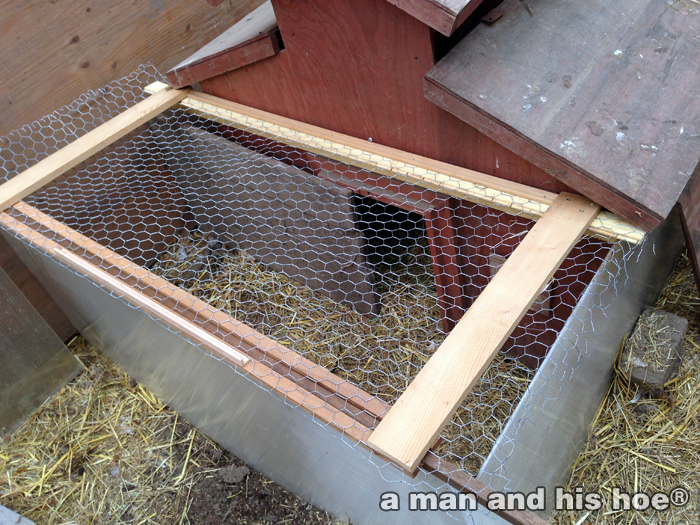
Often, when hens are incubating a clutch of eggs, other hens will insist on laying eggs in the same nest. Some hens stand their ground and won’t budge an inch. However, all brooding hens leave their nest at least once a day to eat and poop. During the twenty to thirty minutes they are off the nest, other hens can hop on the nest to lay an egg. If they are still on the nest when the brooding hen returns, chaos often erupts.
Hopefully, the incubation suite will solve these problems, and give the brooding hen a carefree brooding experience. If she wants to go outside and enjoy a sunbath, I can slide open the side for her and close it while she is out, to keep her eggs undisturbed. Perhaps I should think about temporarily placing a RFID tag on her and wire a door so it would open and shut only for her.
Which brings me to my ultimate dream device: a tiny automated stamping device I could implant in a hen’s vent so that every time she lays an egg, the egg would get a timestamp which includes the hen’s name and GPS coordinates. The device would also have a super fast DNA decoder which would instantly determine which rooster fertilized the egg and stamp his name on the egg as well. Or if the egg was not fertilized, it would note that too. And of course, the device would send a text message with all of this information. Then I would instantly know when and where each hen laid an egg.
-
More Chicken – The Other Red Meat
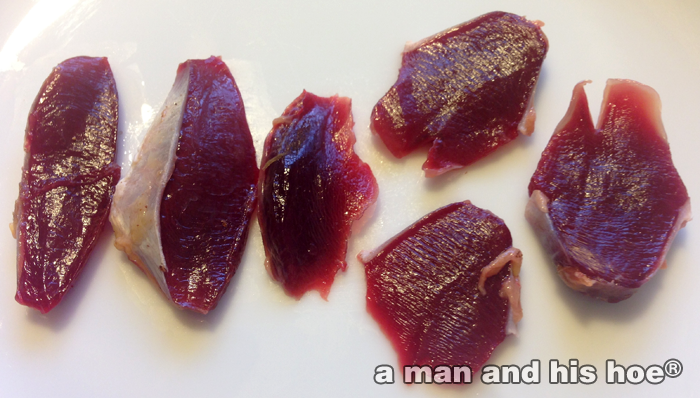
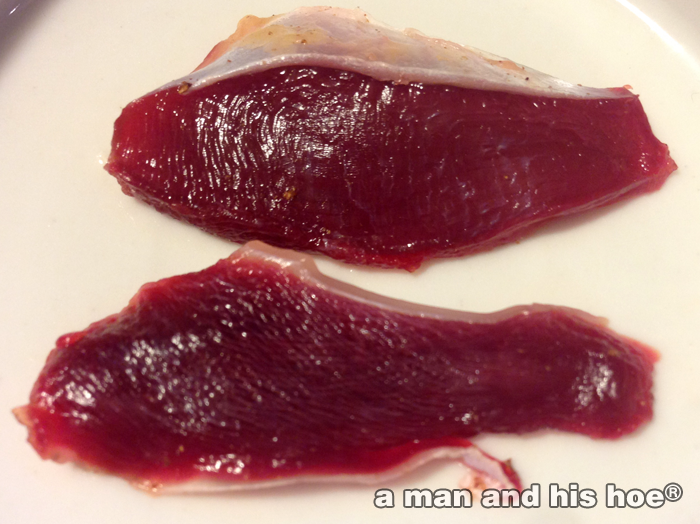
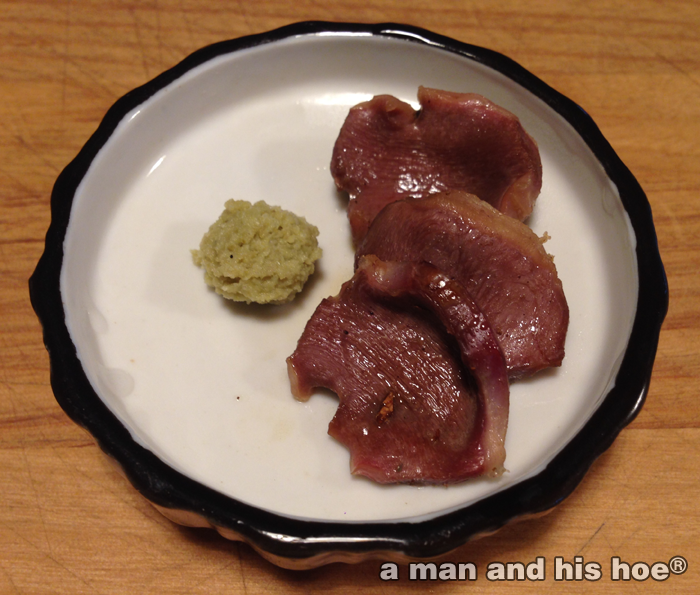
This probably isn’t what comes to mind when you think of chicken. You probably don’t associate such a dark, red meat with chicken. But when roosters get to live outdoors, courting hens through pasture and woodland, breathing fresh air all day, roaming far and wide in search of love, and standing guard over their flock, they develop large, healthy gizzards.
The first time I butchered a rooster, what shocked me was the vibrant colors of his internal organs. Gizzards of healthy, exercising chickens have a beautiful blue hue on the outside. That first rooster’s gizzard was an especially brilliant, cobalt blue.
The gizzard is a strong muscle surrounding a pouch with a tough lining. Inside are bits of gravel and small stones. The food a chicken eats passes into the gizzard from the crop. The muscles of the gizzard churn vigorously, grinding the food and gravel together, turning the grain and grasses and bugs a chicken devours into a mash. The gizzard does the job our teeth do when we chew.
As a result, the gizzard of a healthy chicken is tough. Slice it thin, fry it gently in butter, add some white wine or sake, a bit of soy sauce or Worcestershire sauce, and in a few minutes you have a wonderful appetizer. What makes this meat exceptional is the texture. It has a crunch you don’t associate with meat.